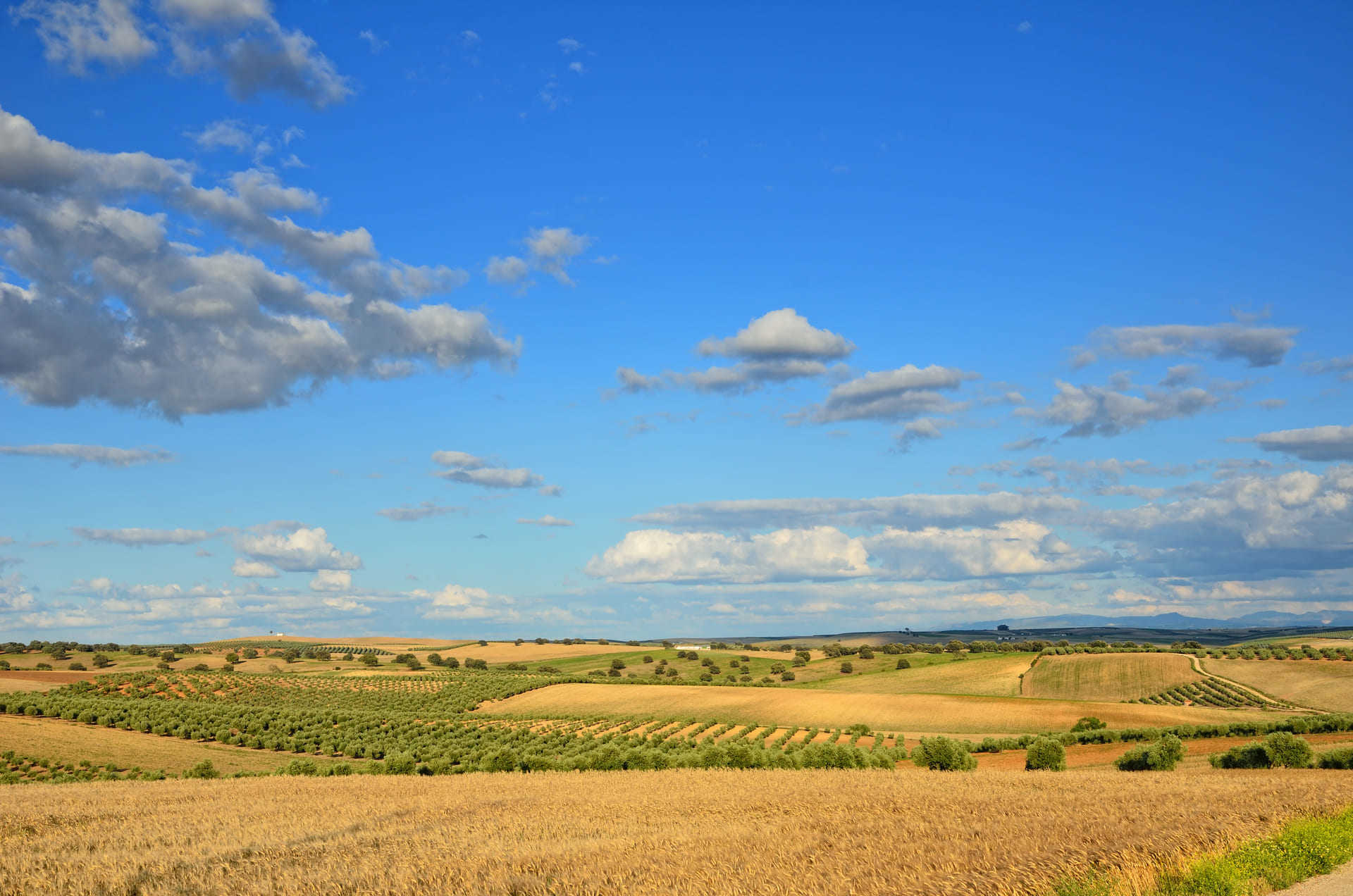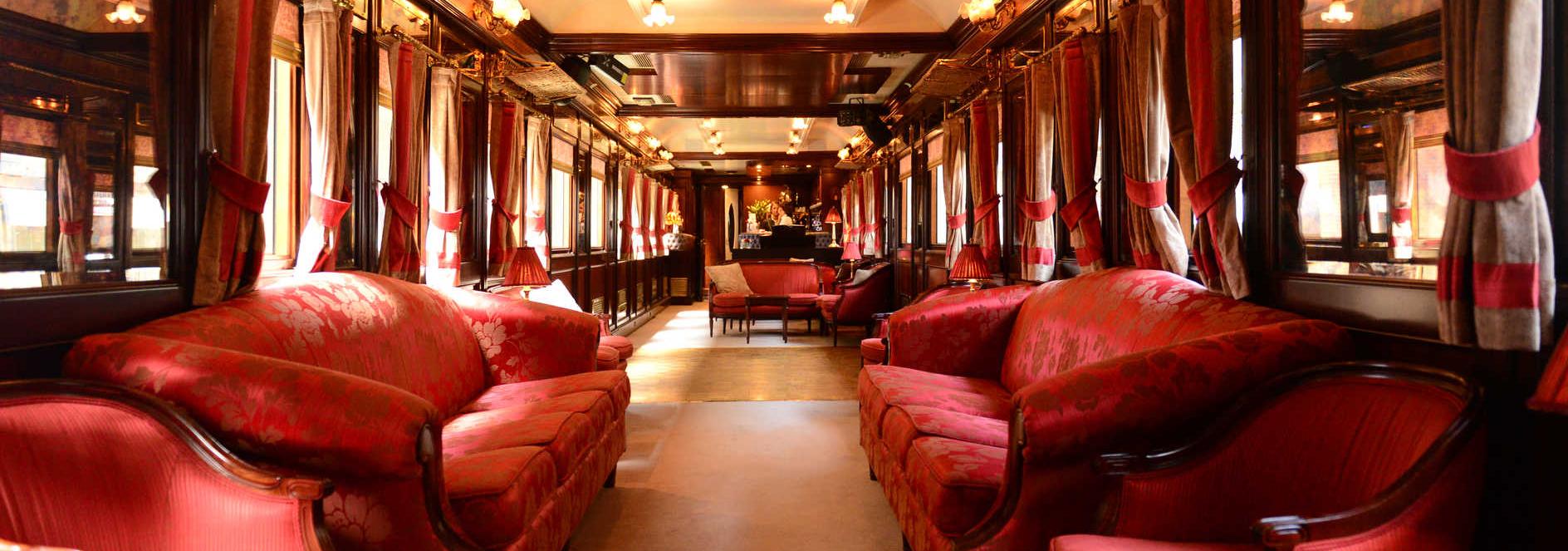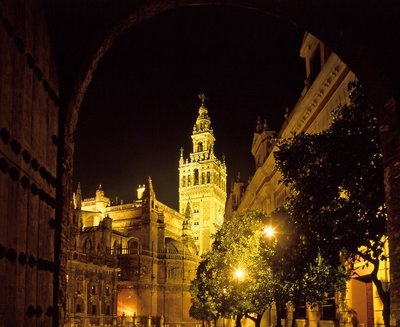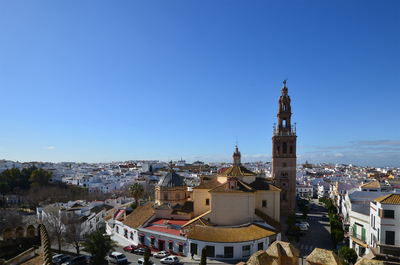The harvest: the culture of bread and beer

Andalusia is the main cereal producer in Spain and the harvest happens mainly in the fields of Seville, Cadiz and Cordoba. Here you can see the typical landscape: an undulating patchwork of brown, fallow fields, alternating with green ones that turn golden as the harvest (and summer) approaches.
As there is wheat in abundance, there are many towns that are famous for their bread, like Alcalá de Guadaíra. Cervantes, in Rinconete y Cortadillo, when talking about a fabulous lunch, mentions "three very white loaves of Gandul", in Alcalá de Guadaíra. The force of the river has been used since the Middle Ages to move the stones of their mills —which can be visited— to make very fine flour. In the 19th century, a railway line was built from what was known as Alcalá de los Panaderos to supply Seville with bread. Today that railway has been converted into a greenway.
Another type of bread that is typical in western Andalusia comes from the time of the great overseas expeditions: "regañás". They are a type of bread made with very little water and baked twice —which is why they were also called "biz-cochos" (double-baked)—, so that they would withstand the voyage. We also have "picos" (kind of small breadsticks), which all self-respecting bars serve with tapas. They are also added to other dishes as a crunchy ingredient.
And we could write a whole book about "molletes": like the ones from Archidona which are unleavened, like Jewish unleavened bread; and those from Antequera which have a Protected Geographical Indication (PGI). The bread of Alfacar also has the same quality mark, as it is a land of flour mills where they still knead the bread with water from the Fuente Grande spring. By the way, the other secret ingredient of the best bread is the water that is used. Also in the province of Granada we find Alcudia de Guadix, another town famous for its bakeries. In this town we find an interesting place where you can learn more about the breadmaking tradition: Trópolis, a cave bakery and museum that invites you to roll up your sleeves and stick your hands in the dough. You can even make your own bread!
And from tradition to the avant-garde: the winner of the best baker in the world award at the World Baker 2021 competition, Domi Vélez, is the fifth generation in charge of a Lebrija oven. His mother dough has been analysed at university in order to recognise its amazing properties, and he adds innovative ingredients to his recipes, such as Payoyo cheese or butterfly pea flowers. Have you ever heard of archaeogastronomy? Domi is just the spearhead of a huge, magnificent project that includes wine, beer and other products based on historical periods. Come and try a piece of our history!
Barley has been a part of our history and our communities since prehistory, so it is not surprising that beer has been made in Andalusia for centuries. Take, for instance, our centuries-old brands, such as Cruzcampo, established in 1904; or those which are almost a century old, like Alhambra (1925), El Alcázar (1928) and Victoria (1928). A very cold beer is the best way to wash down a plate of tapas in Andalusia, and new craft beers are also becoming increasingly popular.












